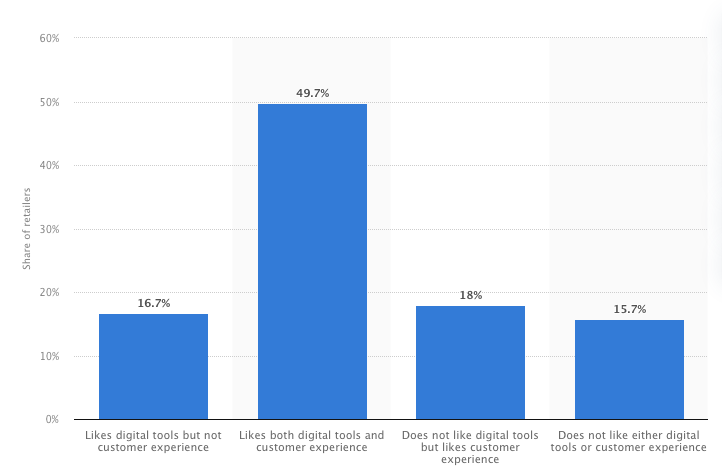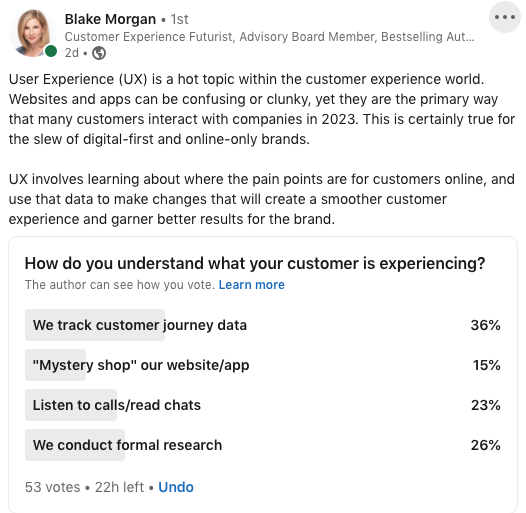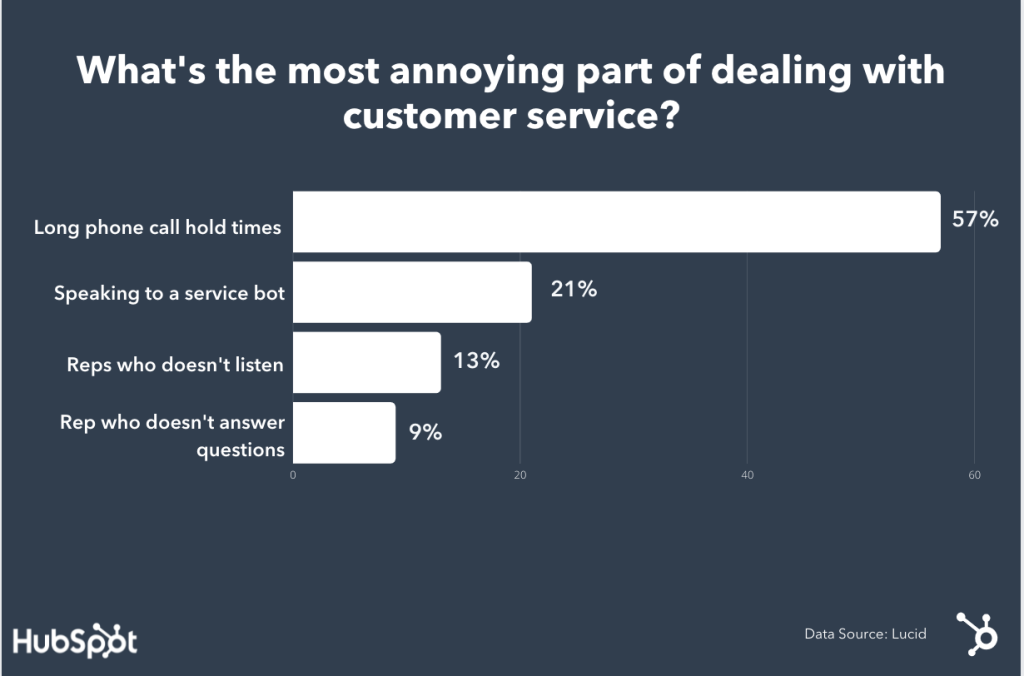Every year, customer experience trends reflect what really matters to customers. What drives these trends? The global economy, current world events, and technological innovations all play important roles.
In 2023, customer experience trends follow the overall global movement of tech development. They also march in line with the general tendencies of digitalization and virtual practices. At the same time, customers value personalization and human-directed experiences. Increased communication and information-sharing possibilities shape customer expectations across industries on a global scale.
Anticipating customer experience trends can help companies prepare and address changing customer expectations.
Keep an eye out for the latest customer experience statistics. Welcome customer feedback and analyze customer insights and data. Understand the customer experience (CX) trends and shape your customer experience strategies and meet consumer expectations.
Let’s dive in.
6 Customer Experience Trends 2023
Trend #1: Further Rise of Virtual Customer Experience
We can blame the acceleration of the remote business trend on the Covid-19 pandemic. After over three years of global lockdowns and the aftermath, businesses and customers adapted to a new environment. However, virtual customer experiences have been trending upward for some time.
Multiple factors shape digital strategies that guide virtual customer experiences. Continuous improvement of these factors leads to the rise of virtual and digital customer experience.
- Availability of digital tools. The means available to customers to contact a business play a major role in both the quality of experiences and customer satisfaction. Digital tools that fuel virtual experience can make people feel both safe and efficient in the post-pandemic world.

- User experience efficiency. Of course, the available digital tools must bring efficiency to customer interactions. Low-quality tools can do more damage to customer experience than no tools at all.

- Remote vs. In-Person Interactions. Customers appreciate the convenience of remote and virtual customer experience. However, this trend comes with a cost. In 2022, 91% of global marketers say remote and virtual work impacted their ability to deliver exceptional customer experiences. (BusinessWire News) It’s important to ensure that digital customer interactions receive the same personalized attention as in-person inquiries. Keep that in mind when developing digital customer experience strategies.
Trend #2: AI-Powered Tools Continue to Boost CX
Of course, we cannot have a discussion about upcoming customer experience trends without mentioning automation. As artificial intelligence (AI) continues to develop, it alters many aspects of our lives, including customer service.
When it comes to customer experience, that’s great news. Good customer support requires various resources. That includes human staff. Automation tools can meet certain simple customer needs. That allows companies to free up their human employees to address more complicated issues.

Customer service automation can help reduce costs and deliver faster resolutions to those simple inquiries. It can also deliver customer support after hours, and raise service reliability levels. Automation tools lessen the possibility of human error and create happier customers. Additionally, in the increasing cases of staff shortages, automation, and AI tech can fill the gap.
Automation tools such as scheduling reminders, autoresponders, and chatbots have been around for years. Further development of AI brings improvements. Smarter AI Chatbots, for example, help customers place orders more efficiently and assist customers in their job and home-buying searches. Web AI-chat and SMS chatbots can serve as highly effective conversational virtual assistants.
In 2023, the list of benefits of AI-powered customer support continues to grow. And so, the quest to deliver a consistent experience to customers continues.
Trend #3: Increasing Value of Personalization
Newton’s third law states that every action has an equal and opposite reaction. True is physics, this is also true in the world of technology and customer service. As more automation and AI-powered tools enter the scene, customers crave the human touch.
It’s easy to get lost in the tech world. A successful marriage of automation and human touch ensures customer engagement. Hyper-personalization serves as the balancing weight to increase tech use. It provides the unique human touch people crave more than ever. Personalization plays on that psychological human need for relative experiences. Unique and personalized experiences just feel good.
Following generational preferences and trends leads to improved CX and increased customer satisfaction. And so, the customer experience trend of personalization will only continue to grow.

Trend #4: Trust and Authenticity Take Front Seat
This is an oldie, but goodie. In a digital, more virtual than ever world, customers continue to crave authentic connections. Perhaps, more than ever before.
Personalization is just one way to get closer to customers. Focusing on authenticity and valuing customers’ trust takes CX a step further. With these uniquely human values, companies go beyond mere product or service satisfaction. They create a closer and stronger relationship with customers. And that, in turn, takes customer loyalty to the next level.
How a business builds trust with its customers depends on the nature of the business. However, there are some general ways to build up customer trust that work across industries:
- Authentic human interaction. We discussed chatbot implementation above. However, it would be a fatal mistake to rely on automation for the majority of customer communications. People crave the human touch in customer service. They want to connect with human customer service representatives. Beyond that, empathy and care must fuel these interactions. Personal service, delivered by caring humans – that’s when customers feel the love.
- Protect customer data. Security is essential in CX. Customers want to know that their information is in good hands. They must feel safe and secure. To ensure the utmost customer information security, implement secure forms into all communication channels with customers.
- Make the resolution process effortless. One of the most annoying aspects of customer service is wait times. Additionally, complicated processes to solve simple issues serve as aggravators in customer experience. A helpful collection of FAQs and availability of self-service options are musts. The availability to quickly locate an agent who can help, if needed, is also key to personable customer service that builds trust and loyalty.

Trent #5: Omnichannel Options Give Customers Choices
With the continuous development of additional communication channels, customers want choices. As much as daily life changed over the course of the pandemic, people are busier than ever. Offer a variety of channels to connect with customers. Make sure the service is consistent throughout all channels. Develop omnichannel strategies that support customer needs and desires.
Trend #6: Feedback and Analytics Bring Positive CX Improvements
Change is the only thing that is constant.
Growth is what carries businesses through the years. Companies and the customer experience they provide must continue to evolve. With more tools to collect and implement customer feedback, the trend of feedback-based improvements continues.
In-software customer analytics play a major role in understanding what works and what doesn’t. Customer feedback serves two purposes. First, asking for feedback makes the customers feel like their opinion matters. It gives additional value to the customer experience. Second, it provides invaluable information to the company about what it can do better.
What’s good for the Goose…How Global Companies Set the Tone for CX Everywhere
A global digital business environment comes with both advantages and challenges. Consistent customer experience has become an expectation across industries. That is because customers do not compare their experiences to those they received from a business similar to yours. Instead, they compare it to the excellent customer experience they received everywhere. For smaller companies, this might create a challenge. They might not have as many resources available as global enterprises. This is where creativity comes in handy. Knowing your customers, their pain points and their needs can help follow the CX trends global environment sets.
Regardless of the type of business or industry you are in, have you adapted the way you do business to meet the new expectations of a customer who has been, for lack of a better word, Amazonized? https://t.co/u49MBUjRGw pic.twitter.com/PeYk6UIoj0
— Shep Hyken (@Hyken) September 1, 2021
Customer Experience as a Competitive Advantage
In today’s market, customer experience (CX) is more than just good service—it’s a powerful competitive advantage. Companies that prioritize CX differentiate themselves by building trust, loyalty, and a strong emotional connection with their customers. When customers feel valued and appreciated, they’re more likely to stay loyal, recommend the brand, and even forgive occasional missteps.
Here’s how CX creates a competitive edge:
- Customer Loyalty and Retention: A positive experience encourages repeat business. Satisfied customers are less likely to switch to competitors, reducing churn and boosting long-term loyalty.
- Word-of-Mouth Marketing: Great experiences lead to positive reviews and recommendations. Happy customers become brand ambassadors, promoting the company naturally and increasing its reach without additional marketing costs.
- Differentiation in a Crowded Market: Many companies offer similar products or services, but CX can make one brand stand out. Exceptional service, seamless interactions, and personalized experiences set companies apart from competitors who don’t focus on CX.
- Higher Profit Margins: Loyal customers tend to spend more over time and are less sensitive to price increases. By focusing on CX, companies can drive higher sales and profitability, as customers see more value in the relationship.
- Feedback-Driven Improvement: Companies that prioritize CX gather valuable insights into customer needs and preferences. This continuous feedback loop allows businesses to refine and improve their offerings, staying ahead of market trends and adapting quickly to changing expectations.
- Employee Engagement and Morale: A strong CX focus often goes hand-in-hand with a positive company culture. When employees see the company’s commitment to customer satisfaction, they feel more motivated and engaged, leading to better service and a stronger brand image.
In essence, CX isn’t just a nice-to-have—it’s a strategic asset. Companies that invest in a superior customer experience can expect higher loyalty, stronger brand reputation, and sustained growth, giving them a true edge in today’s competitive landscape.
Bottom Line: CX Trends 2024
Customer satisfaction should be a business’s first priority. Following global CX trends can help you meet customer expectations. It can help you understand what customers are seeking. It then can deliver tools and services that continuously improve customer experience.
Staying on top of CX trends allows businesses to anticipate changes in customer behavior and adapt before competitors do. Trends like personalization, omnichannel support, and seamless digital experiences are now expectations rather than extras. By integrating these trends, businesses not only improve satisfaction but also build trust and loyalty, showing customers they’re willing to evolve to meet their needs.
Additionally, new CX tools, such as AI-driven insights and automated customer feedback systems, make it easier to gauge customer sentiment in real-time. This immediate feedback lets companies quickly adjust and enhance the customer journey, resolving issues before they become major pain points. Embracing these trends keeps businesses agile, customer-focused, and ready to exceed expectations in 2023 and beyond.




